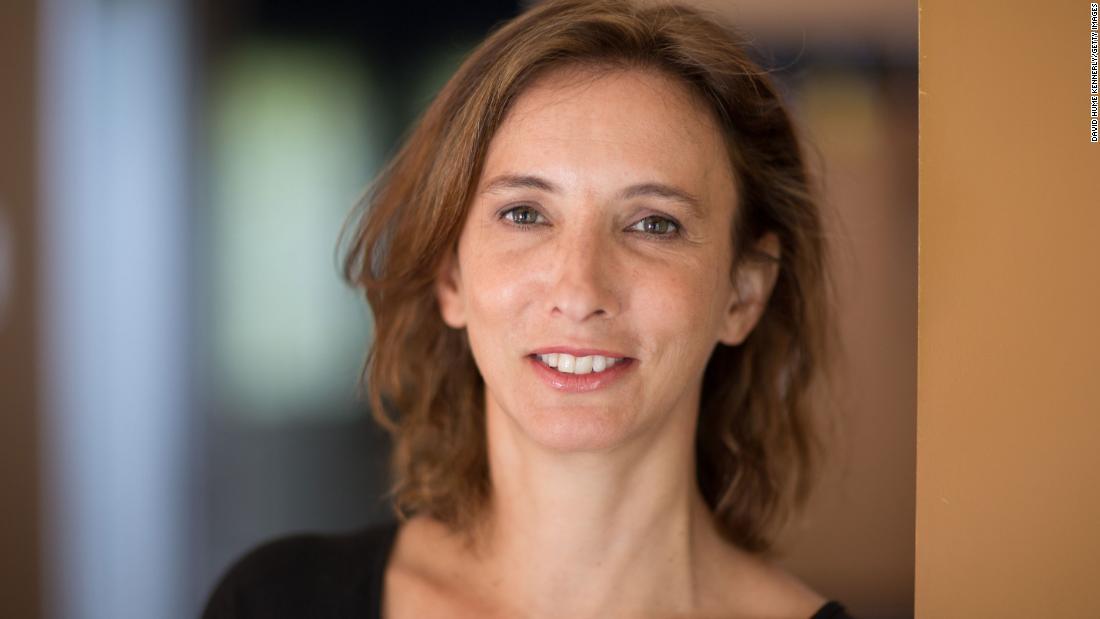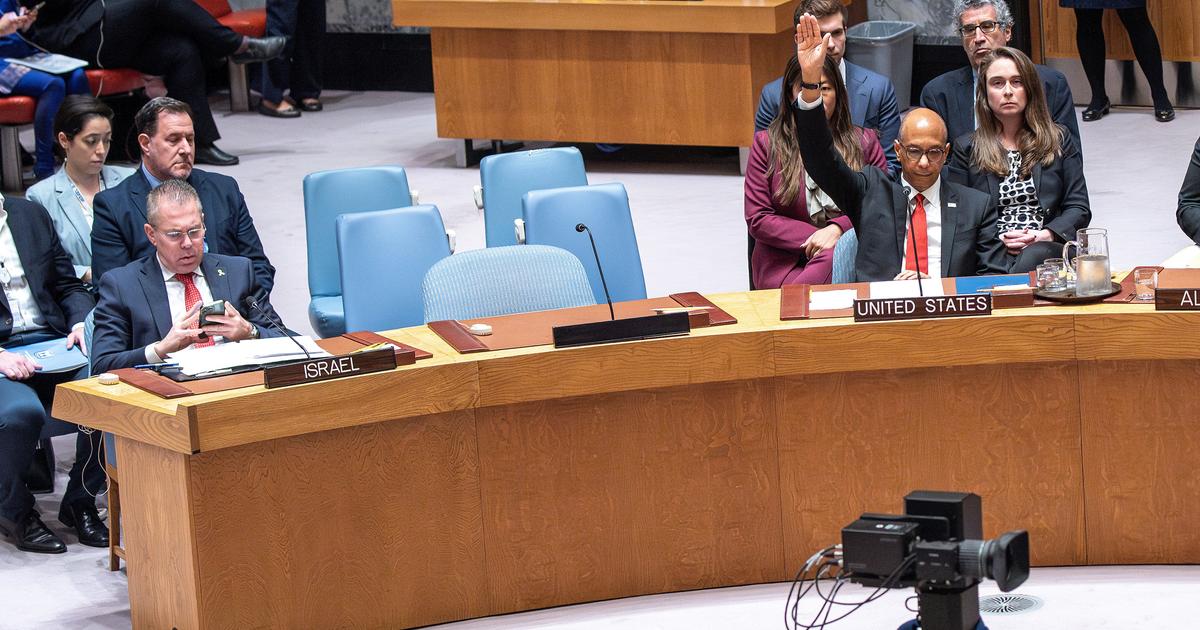Exclusive: new details on al Qaeda's reach 4:01
Editor's Note:
Peter Bergen is a CNN National Security Analyst, Vice President of New America, and a professor of practices at Arizona State University.
This article is adapted from their new book, "The Rise and Fall of Osama bin Laden," published by Simon & Schuster on August 3.
The opinions expressed here are yours.
Read more opinions here.
(CNN) -
Just a week after leaving the University of Virginia with a degree in economics and foreign policy, Gina Bennett began working at the State Department as a typist in June 1988. Within a couple of months Bennett's boss told her, "Gina, you don't belong here. I'm going to promote you to get a job as an intelligence analyst."
Today, 33 years later, as the 20th anniversary of 9/11 approaches, Bennett is a member of the CIA's Senior Analytical Service and works as a senior counterterrorism adviser at the National Counterterrorism Center. No one in the US government has tracked down al Qaeda and all its divisions and ramifications for as long and with as much distinction as Bennett.
This didn't seem predictable when Bennett started at the State Department's Office of Intelligence and Investigation, one of the smallest intelligence agencies in the United States.
Bennett's first job was as a "terrorism watchdog," with eight-hour shifts supervising intelligence services and the media to analyze terrorism trends and respond to attacks as they occurred.
Trump unveils conspiracy theory about Osama bin Laden's death 1:07
On December 21, 1988, a bomb exploded on the Pan Am 103 while flying over Scotland.
The plane crashed, killing a total of 270 people on the plane and on the ground, 35 of whom were Syracuse University students.
Bennett worked in Consular Affairs helping bereaved families and preparing daily updates from the State Department on the bombing.
As West Ends "War on Terror", Jihadists Fill Void, UN Warns
Bennett recalls: "The Pan Am 103 changed me a lot, a lot because many of the passengers were students a little younger than me."
Stopping the next terrorist attack became a mission for Bennett.
"It's like being a cop chasing a serial killer in an unsolved case. You just can't quit," he explains.
The legacy of the Cold War
The Berlin Wall fell in late 1989 and then the Soviet Union collapsed, but Bennett perceived that there was a threatening Cold War legacy: the "Afghan Arabs", who were Arab veterans of the anti-Soviet jihad during the 1980s in Afghanistan.
Bennett noticed that Afghan Arabs were returning to their home countries, such as Algeria, Egypt and Tunisia, and noted that some were joining armed groups.
Bennett was particularly struck by an attack in November 1991 by a group of militants against Algerian border guards, six of whom were slaughtered like animals, hacked to death with knives and swords.
The Algerian terrorists were dressed in Afghan clothes and their leader was called Tayeb the Afghani, "Tayeb the Afghan".
Bennett investigated further and discovered that thousands of Afghan Arabs had left their home countries for Pakistan and Afghanistan during the 1980s, relying on a support network that had funneled men, money and supplies into the Afghan war.
In the early 1990s, that network was sending veterans of the Afghan conflict to join militant Islamist groups around the world.
Trump against Iran: a record of threats and sanctions 2:47
Bennett began writing classified documents about what he was learning.
He began to hear about a certain "Abu Abdullah" who financed some of these Afghan Arabs.
Bennett had no idea that he would spend much of the rest of his career focusing on this mysterious Abu Abdullah, the nom de guerre for Osama bin Laden.
Bennett investigated the attacks on two hotels in Aden, Yemen, in December 1992. They housed US soldiers heading to Somalia to participate in a humanitarian mission to feed starving Somalis.
Yemen officials said the attack was financed by one "Osama bin Laden," then living in Sudan.
While Bennett was investigating Bin Laden and the Afghan Arabs, she became pregnant with her first child, who gave birth on February 23, 1993. Three days later, a team made up of one of the Afghan Arabs, Ramzi Yousef, drove a van to the basement of the World Trade Center and detonated a bomb, killing six people.
When investigators began investigating Yousef's group, they discovered that several of them had traveled to Afghanistan or Pakistan to help in the war against the Communists.
The attack on the Trade Center
Bennett was holding her new baby at the hospital when she received a frantic call about the Trade Center bombing from her boss that almost screamed, "Your people did this! Your people did this!"
His boss was referring to the Afghan Arabs Bennett had been following for the past two years.
At first, Bennett had no idea what her boss was talking about, as she was in great pain from her C-section three days earlier and the pain relievers had already worn off.
He quickly realized that the Afghan Arabs had extended their holy war, this time to New York City.
On Bennett's desk at the State Department was a draft of a document he had been writing that described a movement of mujahideen, holy warriors, from more than 50 countries who had gained battlefield experience in Afghanistan. and that they were now joining militant organizations in countries like Algeria, Bosnia, Egypt, Tajikistan, the Philippines and Yemen, and even in unexpected places like Burma.
The first warning about Bin Laden
When Bennett returned from her maternity leave to the State Department, she resumed writing her document, which she circulated on August 21, 1993.
The classified report, "The Wandering Mujahidin: Armed and Dangerous," singled out "Usama bin Ladin" as a donor supporting Islamic militants in "places as diverse as Yemen and the United States."
Bin Laden's fortune came from his family's construction company, which was one of the largest in the Middle East.
According to Bennett's 1993 analysis, Bin Laden's funding had also enabled hundreds of Afghan Arabs to resettle in Sudan and Yemen.
Bennett's report marked the first time the US government issued a warning about the dangers of a global jihadist movement led by the mysterious billionaire Osama bin Laden.
And the warning was not issued by the CIA or the FBI, but by a junior intelligence analyst at the State Department.
A week later, Bennett published another classified analysis titled "Saudi Patron to Islamic Extremists," in which he noted that Bin Laden had founded a group called "al-Qa'ida" in the 1980s. It was the first time anyone from the The US government identified al Qaeda as a threat, the existence of which was then a well-kept secret.
How a raid in Afghanistan revealed that al Qaeda continues to have global reach under the protection of the Taliban
Bennett had spent time in contact with his intelligence counterparts in countries like Egypt and Yemen to learn as much as possible about Bin Laden and his organization.
Bennett pointed to bin Laden as the financier of the bombings against the two hotels in Yemen.
He also described how bin Laden had assembled at his Sudan base a group of Afghan war veterans who were training to fight new holy wars and who was "financing jihads" around the world, from Pakistan to Thailand.
Bennett knew that what he was describing was not considered "normal" in the world of counterterrorism because it was a case of militants from different countries in a loose alliance that operated without the support of any state.
Bennett wanted policy makers and the intelligence community to pay attention to this phenomenon, but knew it would be difficult.
Bin Laden's role
In classified documents, Bennett described bin Laden as a "financier", as that was the best evidence about him available at the time, but privately he saw it as something more.
Bennett was a practicing Catholic who understood the power of religious beliefs in someone's life.
She was convinced that Bin Laden was a visionary who believed that God was on his side.
He had a model of political change that was based on his experience in Afghanistan, where men from dozens of countries had put aside their different interpretations of Islam and fought in the name of Allah. They had stayed focused on that fight and look what they had done. Helped Achieve: The Fall of the Soviet Union, two years after the disastrous Soviets' war in Afghanistan had ended in 1989.
Bennett believed that Bin Laden was mythologizing this entire movement, not just his own role in it, and he thought it was a repeatable pattern, not just in Afghanistan, but around the world.
Under pressure from the governments of Saudi Arabia and the United States, in mid-May 1996, Bin Laden was expelled from Sudan and transferred to Afghanistan.
Two months later, Bennett published another clairvoyant top-secret analysis titled "Usama bin Ladin: Who's Chasing Whom."
Bennett predicted that bin Laden "would feel comfortable returning to Afghanistan, where he started out as a patron and a mujahid during the war with the former Soviet Union."
Osama bin Laden made a big mistake with 9/11
Bennett went on to predict that bin Laden's "prolonged stay in Afghanistan, where hundreds of Arab mujahideen receive terrorist training and extremist leaders often congregate, could prove more dangerous to long-term US interests than during his three-year stay. in Khartoum [the capital of Sudan] ".
Bennett believed that Bin Laden would be a greater threat now that he was reunited with the birthplace of his own mythology: the battlefields of Afghanistan, where he had personally fought the Soviets in the late 1980s.
He had a network of contacts in Pakistan and Afghanistan that he could easily use.
And he was furious that he had been forced to leave Sudan, where he had invested many millions of dollars, an expulsion for which he blamed the Americans.
9/11
During the spring and summer of 2001, the American intelligence community received a series of credible intelligence reports about Bin Laden's plans to carry out attacks on American targets.
On April 20, the CIA released a report titled "Bin Ladin Plans Multiple Operations", followed by another report on May 3, "Bin Ladin's public profile may herald an attack."
And on August 3, the CIA issued a warning titled "The threat of an imminent attack by al Qaeda will continue indefinitely."
Al Qaeda affiliate trained to hide explosives in computer batteries, report says
According to Bennett, who was working at the CIA at the time and was contributing to the warnings about bin Laden's plans, the fact that some of al Qaeda's plots had previously failed contributed to a sense of that the CIA was exaggerating the threat.
Bennett wondered, "Maybe we're crazy. Maybe we're wrong?"
This was wearing down Bennett and his colleagues.
It was a difficult summer.
On the morning of Tuesday, September 11, 2001, the oppressive heat of the Washington summer was finally beginning to dissipate;
the sky was a cloudless sky blue and the air was crystal clear.
Gina Bennett and her friend Cindy Storer, who had been on Bin Laden's "account" as long as anyone else at the CIA, shared their car to go to the agency's headquarters in McLean, Virginia, which is hidden behind a tree screen in a leafy neighborhood of sophisticated mansions.
Throughout the journey, Bennett and Storer had been talking about the assassination, two days earlier, of Ahmad Shah Massoud, the leader of the anti-Taliban resistance in Afghanistan.
They debated whether it was a gift from Bin Laden to the leader of the Taliban, Mullah Omar, and continued to probe the question: why go to the trouble of assassinating Massoud if not for some greater reason?
Bennett, who was three months pregnant with her fourth child and occasionally suffered from morning sickness, was at her desk at the CIA Counterterrorism Center when she heard that a plane had crashed into the World Trade Center.
She and her colleagues turned on the television and watched the coverage.
They saw the second plane crash into the other tower at 9:03 am The Bin Laden attacks they had warned of were on them.
The 9/11 attacks in numbers 2:41
CIA executives told everyone to evacuate the agency's headquarters building, but those from the Anti-Terrorism Center were told to remain at their desks;
after all, they knew more about al Qaeda than anyone else in the government.
The Antiterrorist Center team was divided, and some officials tried to find the manifestos of the passengers of the hijacked planes.
Bennett and his team members tried to figure out what the terrorists' next target might be.
They were well aware that militants linked to al Qaeda had developed a plan six years earlier to blow up a plane against CIA headquarters.
And there was a hijacked airliner heading to Washington.
That plane would crash into the Pentagon at 9:37 in the morning.
The terrorist attacks that day in New York City, Washington City and outside Shanksville, Pennsylania, killed 2,977 people.
The magnifying glass on Saddam Hussein
A few weeks after 9/11, Bennett was removed from her job to investigate the alleged involvement of Iraq's dictator Saddam Hussein in 9/11.
Senior Bush administration officials were convinced that Saddam was involved.
But when Bennett investigated whether there were substantial links between the Iraqi regime and al Qaeda, he concluded that the Saddam regime and al Qaeda were "mutually hostile," an analysis he shared with Bush administration officials.
Yet President George W. Bush was determined to go to war, and the following month US Secretary of State Colin Powell spoke at the UN Security Council claiming that Saddam was hiding a program. of weapons of mass destruction and was allied with al Qaeda.
Biden Announces End of Combat Mission in Iraq, While Shifting Focus of U.S. Foreign Policy
The Iraq war began in March 2003. Seven months later, on November 11, 2003, Bennett and several other intelligence officials briefed President Bush and his war cabinet in a meeting in the Situation Room of the White House that "Iraq came at exactly the right time for al Qaeda" as it had allowed the group to act again.
Religious extremists from all over the Muslim world were arriving in Iraq.
The Iraq war had saved Al Qaeda.
The death of Bin Laden
Eight years after the start of the Iraq war, Bin Laden was assassinated in Pakistan by US Navy SEALs on May 2, 2011. A CIA analyst in her 20s sent Bennett a message saying: " Hey, was it a really bad day for Al Qaeda? "
Bennett replied, "Well yeah. It's a pretty bad day, but it's definitely not the worst."
His colleague asked, "What are you talking about? Bin Laden is dead."
Osama bin Laden was a doting grandfather, but a paranoid terrorist
Bennet asked his younger colleague about a previously infamous terrorist group that had terrorized Germany during the 1970s: "Well, let me ask you this: Have you ever heard of the Baader-Meinhof gang?"
His colleague said, "No."
Bennett replied, "Well, someday when one CIA Counter-Terrorism Center agent says to another," Have you ever heard of Osama bin Laden or Al Qaeda? "And he says," No, "that will be the worst. day".
Osama bin Laden








/cloudfront-eu-central-1.images.arcpublishing.com/prisa/W7IQF4C7SNGWPISPIMSYTSYPBU.jpg)






